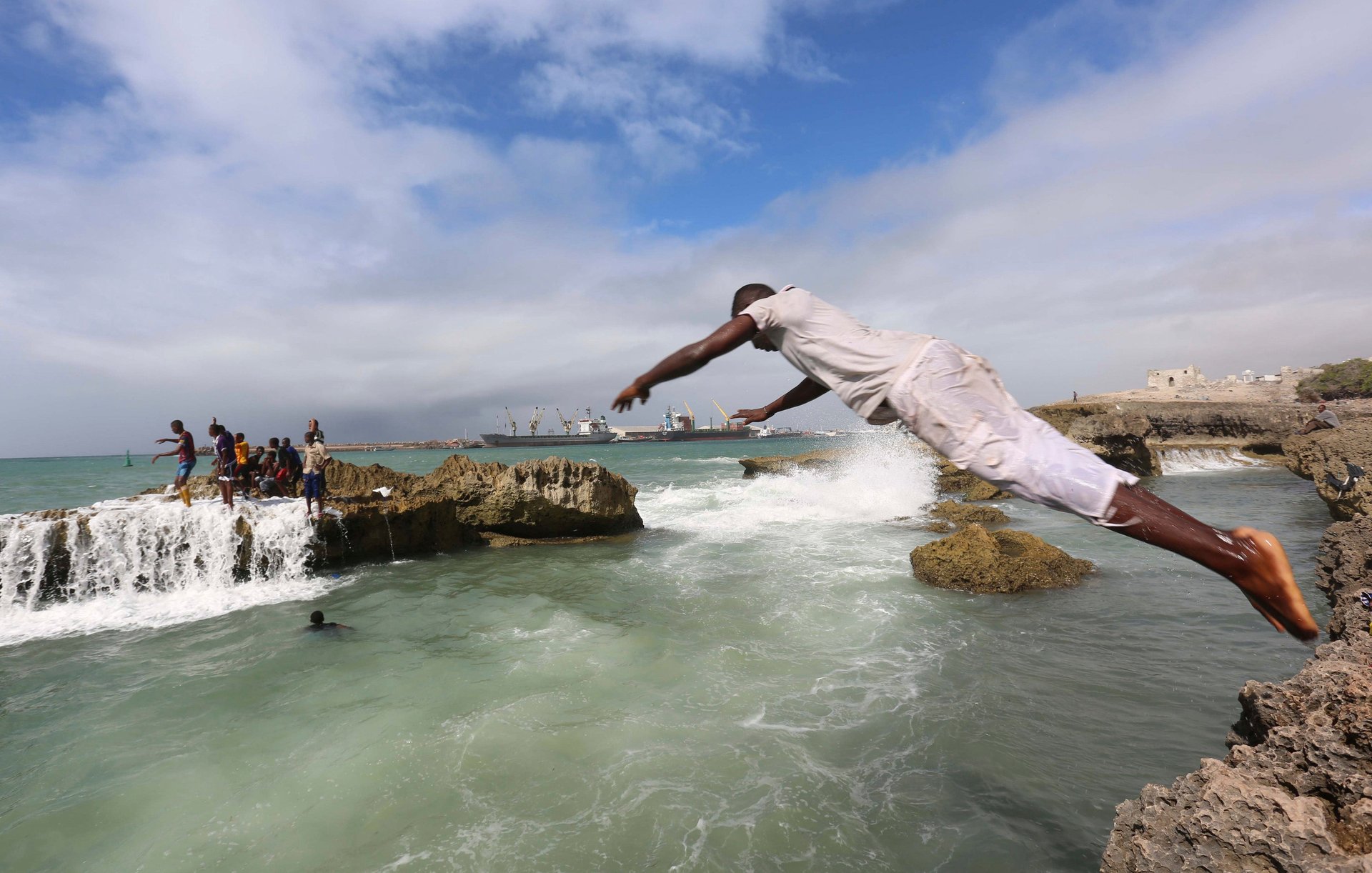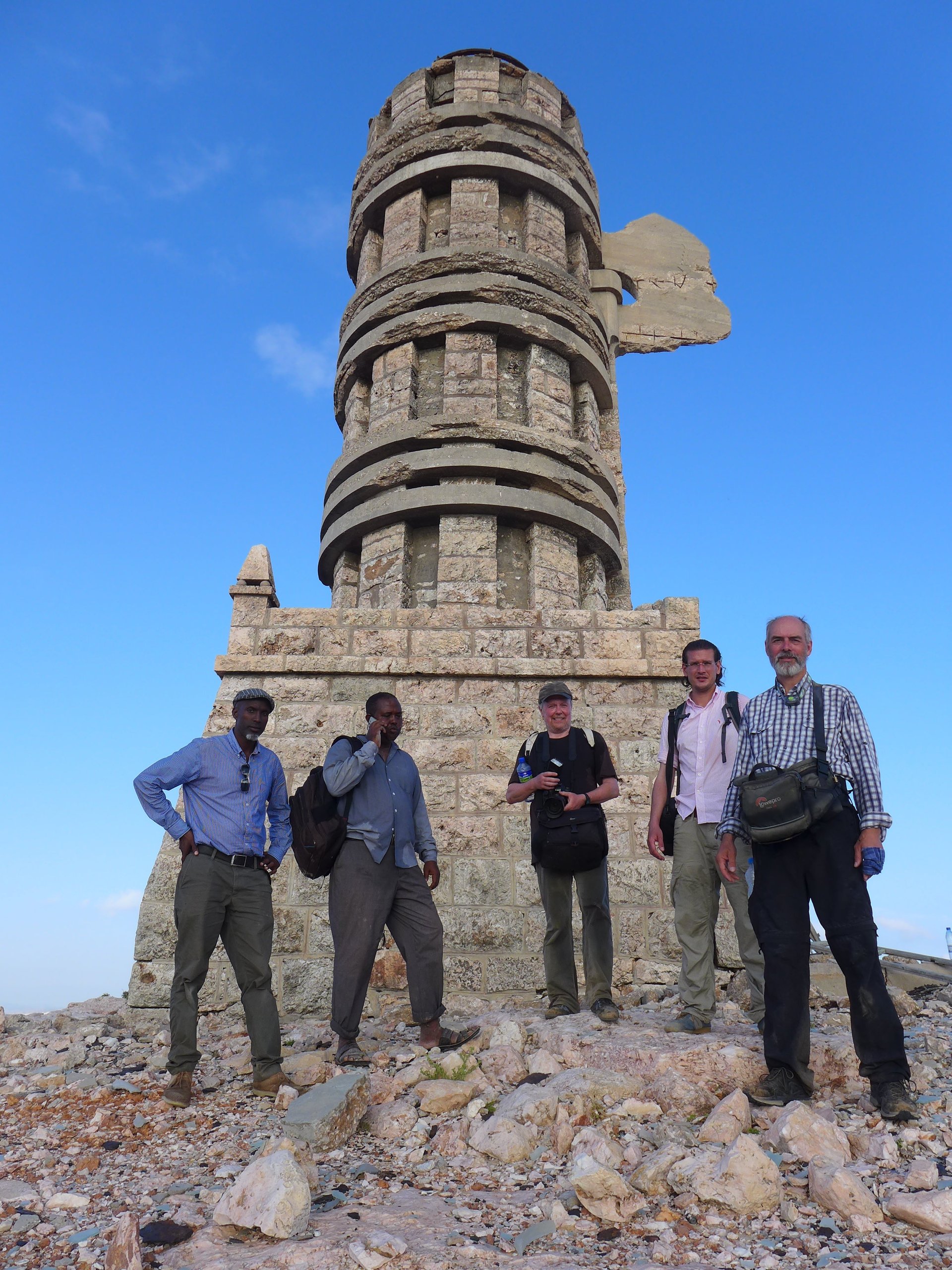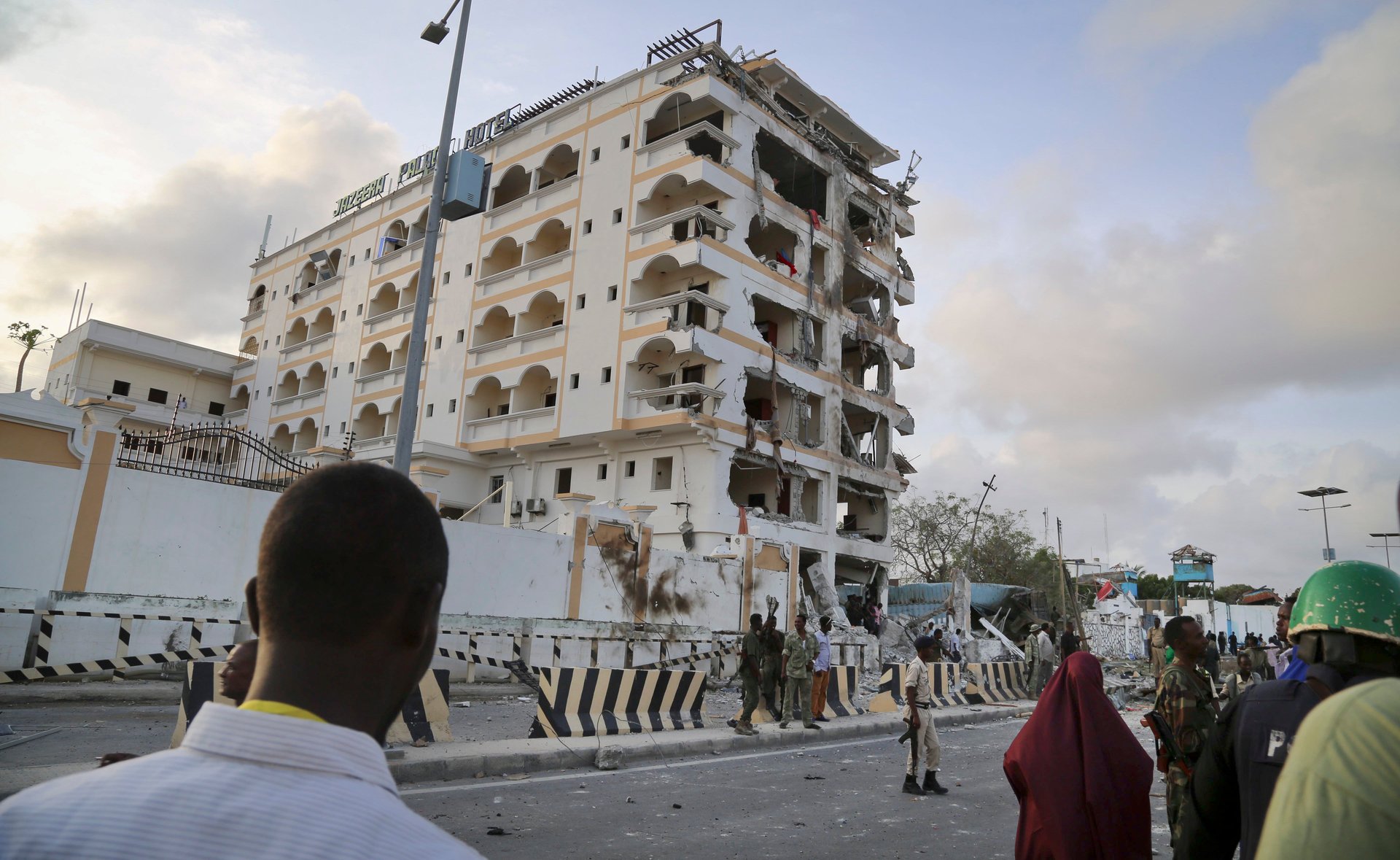Tourists are heading to Somalia to see the ruins of a two-decade civil war
For a trip to the Puntland region in northeastern Somalia, Christian Matzenauer didn’t know what to expect. After traveling from Dusseldorf, Germany to Addis Ababa in Ethiopia he flew to the Somali city of Bosaso in January, drove along the coast to the towns of Alula and Bareeda, before finally arriving at Tohen.


For a trip to the Puntland region in northeastern Somalia, Christian Matzenauer didn’t know what to expect. After traveling from Dusseldorf, Germany to Addis Ababa in Ethiopia he flew to the Somali city of Bosaso in January, drove along the coast to the towns of Alula and Bareeda, before finally arriving at Tohen.
There, at the apex where the Horn of Africa meets the Indian Ocean, Matzenauer walked to see the Guardafui lighthouse: a 19-meter tall, abandoned tower built by the Italians during the early 1920s. Guardafui’s lighthouse is also unique in that it features a stone ax blade, a symbol that represented authority in Fascist Italy. Built during Benito Mussolini’s rule, it is one of the last known standing fascist monuments in the world.
Somalia is not your everyday vacation spot. It is one of the world’s most dangerous countries (pdf, pg. 9), plagued by political infighting, violence, and terrorism. The United Nations World Tourism Organization has never recorded the number of people who visit the country since it started collecting data on tourism in 1995. Governments across the world also advise their citizens to avoid traveling to the country, for fear of kidnapping or attack. Somalia’s reputation as a tourist destination with pristine beaches completely disintegrated following the start of the civil war in 1991.
Security is still a major challenge, with the terrorist group al-Shabaab attacking almost all major hotels and restaurants in Mogadishu. Between 2007 and 2014, the al-Qaeda-linked group has carried out more than 1,700 attacks in and out of Somalia, killing more than 4,000 and wounding the same number, according to the National Consortium for the Study of Terrorism.

But that isn’t stopping tourists like Matzenauer from flying there every year. The tourists come as the nation recovers from decades of civil war. Since 2011, a new central government has led the country, and a semblance of normal life is evident in the opening of new businesses, hospitals and schools. The hospitality industry is also picking up with the opening or renovation of hotels, restaurants, and pizza parlors.
“It was the most fascinating experience I had,” Matzenauer said. The trip to Guardafui was his second to the country after visiting the capital Mogadishu in 2013.
The process of traveling to Somalia is easier said than done. Matzenauer went with Untamed Borders, a British adventure travel company that takes tourists to off-the-beaten-track destinations. These include Afghanistan, Pakistan, northeast India and Somalia. During the trip, the clients are escorted by high-level personal security, a translator, and a fixer to show them around.
Since the first trip in 2012, the company’s co-founder James Willcox says they have guided 39 trips to Mogadishu, the same number for Somaliland, and one trip to the Puntland region. In a city like Mogadishu, bedeviled by war and filled with bullet-pocked buildings, the mundane, day-to-day activities, he says, can leave indelible memories for a visitor.
“Danger is not the reason for what we do,” Willcox says. “What we try and do is show places for the kind of complex, multifaceted places they are.” In Somalia, he says, tourists pay a visit to the popular Lido beach, take a boat ride on the Indian Ocean, visit the fish market and go see the lone deserted and destroyed cathedral.
Domestic tourism
Part of the turn towards commercial tourism in Somalia can be seen in the work of Yasir Mohamed Baffo, the founder and chief executive officer of the Somali Tourism Association (SOMTA). Baffo was born in Mogadishu and studied tourism management in Malaysia. He founded SOMTA in 2012 as a nonprofit dedicated to making tourism accessible to all Somalis.
Yasir says the country’s natural beauty, its good weather, white sands, its mountains, and rivers combine to give it a head start. To jumpstart his idea of reviving domestic tourism, Baffo organized tours for young Somalis outside of Mogadishu. He has taken these youngsters to see old tombs near Jazeera Beach outside the capital and historical locations in Warsheikh town and Balad.
The trips have created excitement among Somalis as well as foreigners, including a group of Kenyans and Malaysians Baffo took around Mogadishu’s neighborhoods.
“Our strategy was to do more [tourist activities] when the security in the country has improved for the better,” Baffo said. “But the excitement of the people has superseded any of our plans.”
Baffo is keenest on people like Hamda Yusuf, a Somali-American who lives in Seattle, Washington. Somalis living in the diaspora are returning every day with the dozens of flights landing in the country’s main airports. After being away for so long, many of these returnees want to reconnect with family and experience the culture.
Yusuf recently returned with her family to visit the country they left decades ago. Yusuf’s mother comes from Somaliland, a peaceful autonomous region in northwestern Somalia. Arriving in the capital Hargeisa, the most important thing, she said, was “being around so many Somali people all the time. Simple trips to the shop can be oddly emotional.”

After a few days with her family in Hargeisa, Yusuf visited Berbera, a port city where old Ottoman architectural influences are still visible. She also went to Sheikh town, where her mother grew up, traveling through the winding road with panoramic views of the Sheikh Mountain, built by the Chinese in the 1980s. Startling gazelles and camels along the way, Yusuf said, “My sister and I joked that it felt like we were on a safari that we didn’t remember paying for.”
Still, troubles beset the country’s attempts to kickstart the tourism industry. Mohamed Dubo, a Somali entrepreneur and the publisher of the Somali Investor magazine, says the lack of a coordinated front between the private and public sector is a key problem.
“The government is not moving as fast as the private sector is moving in effect to tourism,” Dubo says. The state, he says, has yet to adopt a policy on tourism development.

For now, entrepreneurs like Baffo hope to build the infrastructure surrounding the tourism industry. SOMTA is currently training hotels to improve customer satisfaction. It is also helping organize and manage events in Somalia like the Mogadishu book fair, a soon-to-be-unveiled real estate exhibition, a global Somali diaspora conference, and a forum on higher education.
These events have been attended by both Somalis and non-Somalis–a sign, Dubo says, that people are interested to come and visit Somalia. Beyond the image of bombed-out buildings and the memory of Black Hawk Down, he believes, lies the hope of a bright future.
Willcox from Untamed Borders says that the relative improvement in security in the country will only bolster the number of their clientele. This would also help them arrange more activities for the visitors like they have done in Afghanistan, by running ski trips and organizing the country’s first ever international marathon.
“There are people who always want to go somewhere new,” Willcox said.
Matzenauer says his visit to Somalia helped him see how a country tested by war regains its confidence. Most of his friends would still not go to Somalia, he says, “but also quite a lot of them are also excited to see pictures and videos from my trips going there. They are kind of fascinated.”